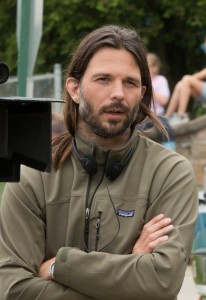![]()

Elrick began the session by asking how Sandgren and director Gus Van Sant decided to use film rather than to go the digital route. “To me, it was clear it was going to be some sort of naturalistic photography,” Sandgren said. Sandgren and Van Sant had discussed 65mm at first, but soon realized that it would be too bulky and expensive. Sandgren explained how he and Van Sant took inspiration from still photographers from the 1970s and 1980s who, at the time, were using Leika cameras and kodachrome. “We did not to shoot in cinemascope because we wanted to be kind of square, not so cinematic,” Sandgren said.
Another unusual technique used for this film was the decision not to use monitors during filming. Sandgren said it actually helped move filming along faster because there was less time spent watching playbacks after every take.
“It was great,” Sandgren said. “Both the actors, Matt Damon and John Krasinski wrote the film and they were producing. There were a lot of people involved and we were going to shoot it fast, and (Van Sant) felt that without monitors maybe we could save some time.” The time saved allowed the filmmakers to add a day of reshoots and helicopter footage. “Everyone has to trust their instincts,” Sandgren said. “And the day after, everyone watched the dailies. And then you could always re-shoot.”
Sandgren emphasized that the approach to this film was highly instinctual. To prepare for shooting a scene, they would choose a location that worked for the character and then make sure they had 360° options. They would block out the scene with the actors in plain clothes, then they would choose the camera angles. They would then bring in the crew and have everyone watch as the actors played out the scene and then the actors would go get in wardrobe and they would shoot the scene.
Sandgren said they used very little lighting, again, aiming for a naturalistic feel. “I would love to see this movie on 65mm, documentary style, no lighting,” Sandgren said. “That is a great approach too, to try to make it look like it’s not lit and actually not use much lighting. ‘The more natural, the better,’ was the approach. And if we could have shot it on an even larger format, it would have been good, I think, for this film, because it’s a portrait of America.”





